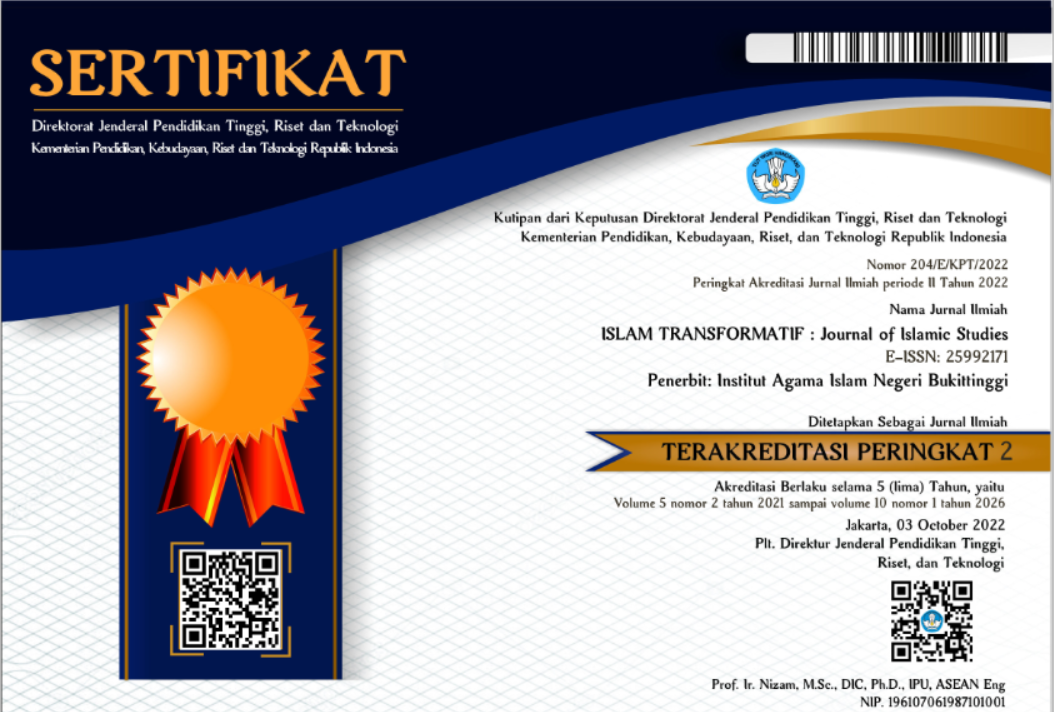KOMPETENSI KOMUNIKASI ANTARBUDAYA MAHASISWA MELAYU SELATAN THAILAND DALAM BERBAHASA INDONESIA DI UNIVERSITAS ISLAM NEGERI SUMATERA UTARA MEDAN
DOI:
https://doi.org/10.30983/it.v3i2.2341Abstract
The purpose of this study was to analyze the competency of intercultural communication in Southern Malay Thailand students in Indonesian languages in UINSU Medan. This study using the Theory of Intercultural Communication Competence of Samovar (2010). This research method uses qualitative research which is approaching the hermeneutic phenomenological study. The research subject is Southern Malay Thailand students in UINSU Medan. The Informants were 4 Students which is obtained through Snowball Sampling. Data collection method is observation, interview, and documentation. Analysis of this study is using thematic. The Data Triangulation have done to 3 (Three) indigenous students and 1 (one) Lecturer. The result of this study is showing that Southern Malay Thailand Students have been competency of intercultural communication, which is we can see it from seven (7) components ; experience, motivation, knowledge, mastering the language, attitudes, adopting the intercultural communication and behaviour.The obstacles of this students is only about Language (Bahasa), they’re less mastering the languages so that sometimes they’re missunderstanding the meaning. Another barriers is the speed in talking, the communication in Medan usually have loud voice and high intonation.
References
Creswell, John W, Research Design: Pendekatan Kualitatif, Kuantitatif, dan Mixed, Edisi ketiga, Alih bahasa oleh Achmad Fawaid, Yogyakarta: Pustaka Pelajar, 2010.
DeVito, Joseph A, Human Communication. (terj) Komunikasi Antarmanusia, (Ed.5). Jakarta: Profesional Books, 1997.
Effendy, Onong Uchjana, Ilmu, Teori, dan Filsafat komunikasi, Bandung: PT. Citra Aditya Bakti, 2003.
Hall, Edward T, Beyond Culture, New York: Anchor Books, 1989.
Littlejohn, Stephen W dan Karen A. Foss, Teori Komunikasi: Theories of Human Communication. Jakarta: Salemba Humanika, 2013.
Martin, Judith N. dan Thomas K. Nakayama, Experiencing Intercultural Communication (3rded.), New York: McGraw-Hill, 2008.
Mulyana, Deddy, Ilmu Komunikasi, Suatu Pengantar. Bandung: Remaja Rosdakarya, 2004.
__________, Ilmu Komunikasi, Suatu Pengantar. Bandung: Remaja Rosdakarya, 2005.
Mulyana, Deddy dan Jalaluddin, Rakhmat, Komunikasi Antarbudaya, Bandung: Remaja Rosdakarya, 1990.
Parks, M. R, Interpersonal Communication And The Quest For Personal Competence, In M. L. Knapp & G. R. Miller (Eds.), Handbook of interpersonal communication (Hlm. 171-201). Beverly Hills, CA: Sage, 1985.
Rahardjo, Turmono, Menghargai Perbedaan Kultural Mindfulness dalam Komunikasi Antaretnis, Yogyakarta: Pustaka Pelajar, 2005.
Ricoer, Paul, Hermeneutics and the Human Sciences., ed.dan terj.; John B. Thompson, Cambridge: Cambridge Univ. Press, 1985.
Samovar, Larry A, Richard E. Porter dan Edwin R. McDaniel, Komunikasi Lintas Budaya (Communication Between Cultures) Edisi 7. Jakarta: Salemba Humanika, 2010.
Tubbs, Stewart L. & Sylvia Moss, Human Communication: Konteks-konteks Komunikasi, Bandung: Remaja Rosdakarya, 1996.
Wiemann, J. M., & Backlund, P, Current Theory and Research In Communicative Competence, Review of educational research, 1980.
Downloads
Published
How to Cite
Issue
Section
Citation Check
License
Authors who publish with this journal agree to the following terms:
- Authors retain copyright and grant the journal right of first publication with the work simultaneously licensed under a Creative Commons Attribution-ShareAlike 4.0 International License that allows others to share the work with an acknowledgment of the work's authorship and initial publication in this journal.
- Authors are able to enter into separate, additional contractual arrangements for the non-exclusive distribution of the journal's published version of the work (e.g., post it to an institutional repository or publish it in a book), with an acknowledgment of its initial publication in this journal.
- Authors are permitted and encouraged to post their work online (e.g., in institutional repositories or on their website) prior to and during the submission process, as it can lead to productive exchanges, as well as earlier and greater citation of published work (See The Effect of Open Access).




